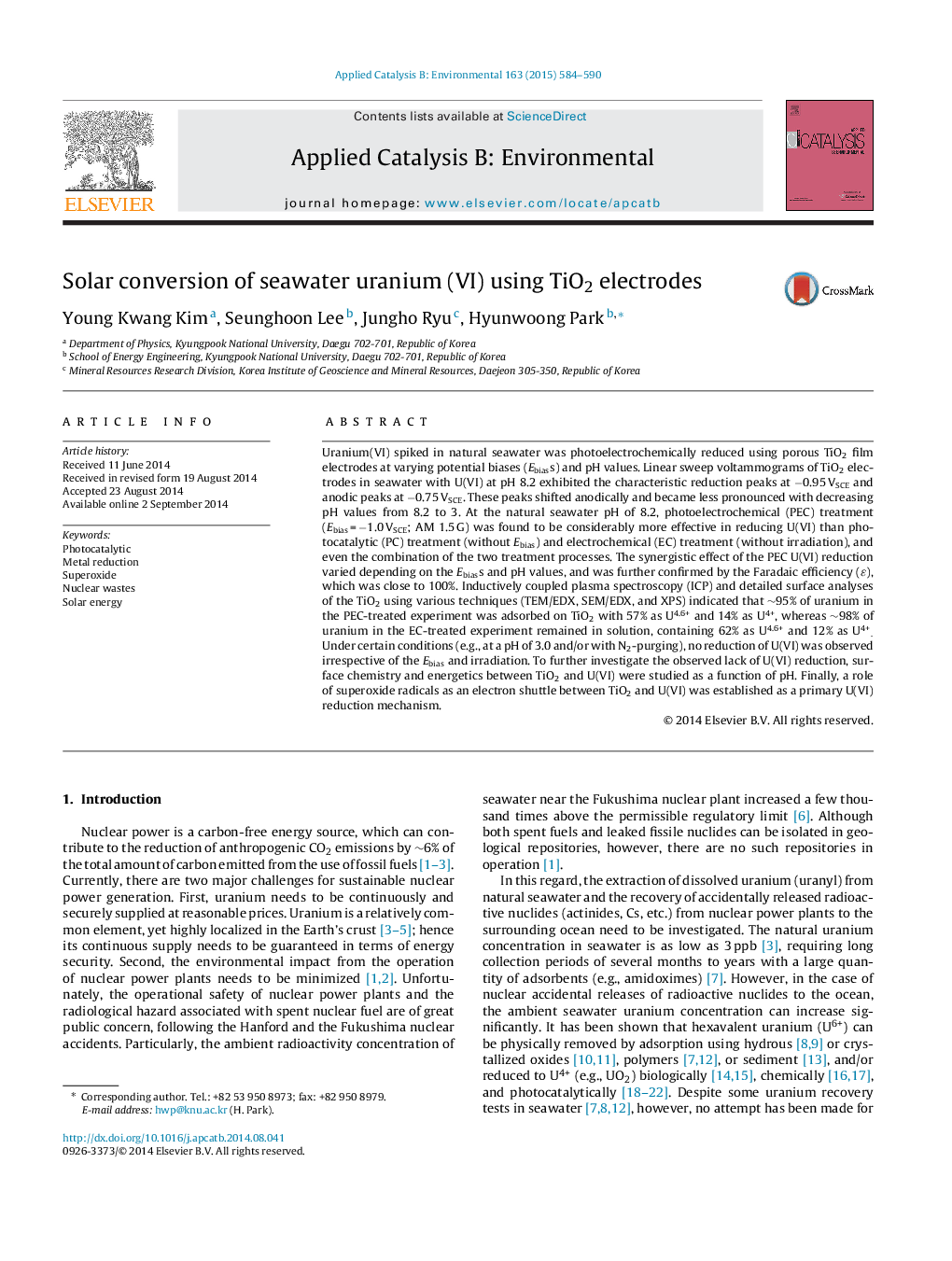| Article ID | Journal | Published Year | Pages | File Type |
|---|---|---|---|---|
| 44912 | Applied Catalysis B: Environmental | 2015 | 7 Pages |
•Seawater uranium is photoelectrochemically reduced using TiO2 film electrodes.•Photoelectrochemical treatment is far more effective than electrochemical and photocatalytic treatments.•The faradaic efficiency for U(VI) reduction is close to 100%.•95% of U(VI) in solution is adsorbed on TiO2 with 57% as U4.6+ and 14% as U4+.•Superoxide radicals play a critical role in photoelectrochemical reduction of U(VI).
Uranium(VI) spiked in natural seawater was photoelectrochemically reduced using porous TiO2 film electrodes at varying potential biases (Ebiass) and pH values. Linear sweep voltammograms of TiO2 electrodes in seawater with U(VI) at pH 8.2 exhibited the characteristic reduction peaks at −0.95 VSCE and anodic peaks at −0.75 VSCE. These peaks shifted anodically and became less pronounced with decreasing pH values from 8.2 to 3. At the natural seawater pH of 8.2, photoelectrochemical (PEC) treatment (Ebias = −1.0 VSCE; AM 1.5 G) was found to be considerably more effective in reducing U(VI) than photocatalytic (PC) treatment (without Ebias) and electrochemical (EC) treatment (without irradiation), and even the combination of the two treatment processes. The synergistic effect of the PEC U(VI) reduction varied depending on the Ebiass and pH values, and was further confirmed by the Faradaic efficiency (ɛ), which was close to 100%. Inductively coupled plasma spectroscopy (ICP) and detailed surface analyses of the TiO2 using various techniques (TEM/EDX, SEM/EDX, and XPS) indicated that ∼95% of uranium in the PEC-treated experiment was adsorbed on TiO2 with 57% as U4.6+ and 14% as U4+, whereas ∼98% of uranium in the EC-treated experiment remained in solution, containing 62% as U4.6+ and 12% as U4+. Under certain conditions (e.g., at a pH of 3.0 and/or with N2-purging), no reduction of U(VI) was observed irrespective of the Ebias and irradiation. To further investigate the observed lack of U(VI) reduction, surface chemistry and energetics between TiO2 and U(VI) were studied as a function of pH. Finally, a role of superoxide radicals as an electron shuttle between TiO2 and U(VI) was established as a primary U(VI) reduction mechanism.
Graphical abstractFigure optionsDownload full-size imageDownload as PowerPoint slide
